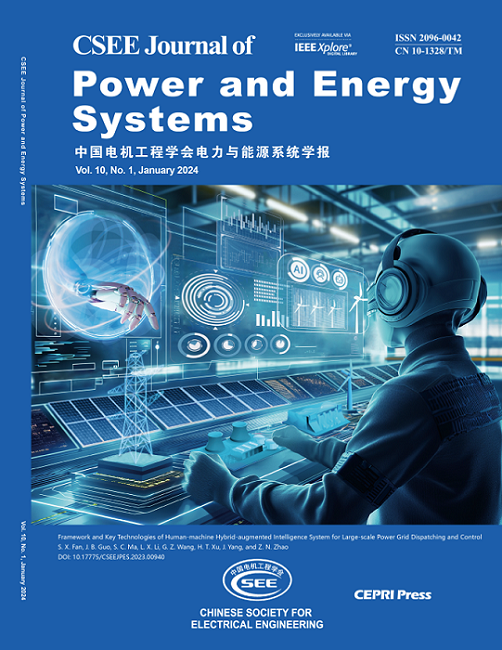高频变压器电压电流传递比的设计考虑
IF 5.9
2区 工程技术
Q2 ENERGY & FUELS
引用次数: 0
摘要
高频变压器是实现直流变换器电流隔离和电压变换的关键设备。随着工作频率的增加,高频变压器由于寄生效应,电压电流传递比与匝比存在明显偏差,无法将期望的电压电流从一次侧传递到二次侧。本文研究了高频变压器电压和电流传递比的设计考虑,以获得预期的传递性能。通过揭示高频变压器负载传递特性(TC)的寄生效应,将电压/电流传递比与转数比的偏差与电压/电流TC谐振频率与工作频率之比相关联。在此基础上,提出了获得期望传动比的寄生参数约束条件,并讨论了改进变压器设计的实际措施。以一台20kHz高频变压器样机为例,验证了样机电压/电流传递比和匝数比偏差的评价,并根据提出的原理进行优化设计,有效地提高了样机的电压/电流传递性能。本文章由计算机程序翻译,如有差异,请以英文原文为准。
Design Considerations on Voltage and Current Transfer Ratio of High-Frequency Transformers
A high frequency (HF) transformer is key equipment for dc-dc converter to achieve galvanic isolation and voltage transformation. As operating frequency increases, voltage and current transfer ratio of HF transformer may significantly deviate from the turn ratio due to parasitic effects, failing to transfer expected voltage and current from the primary side to the secondary side. In this paper, design considerations on voltage and current transfer ratio of the HF transformer are investigated to obtain expected transfer performance. By revealing parasitic effects on transfer characteristic (TC) of the HF transformer with load, deviation between voltage/current transfer ratio and turn ratio is correlated with the ratio of voltage/current TC resonant frequency and operating frequency. Accordingly, constraints for parasitic parameters to obtain expected transfer ratio are proposed, and practical measures to achieve improvements in transformer design are discussed. A 20kHz HF transformer prototype is used as an application, by which evaluations on deviation of voltage/current transfer ratio and turn ratio are verified, and voltage/current transfer performance of the prototype are effectively improved by optimal design based on the proposed principles.
求助全文
通过发布文献求助,成功后即可免费获取论文全文。
去求助
来源期刊

CSEE Journal of Power and Energy Systems
Energy-Energy (all)
CiteScore
11.80
自引率
12.70%
发文量
389
审稿时长
26 weeks
期刊介绍:
The CSEE Journal of Power and Energy Systems (JPES) is an international bimonthly journal published by the Chinese Society for Electrical Engineering (CSEE) in collaboration with CEPRI (China Electric Power Research Institute) and IEEE (The Institute of Electrical and Electronics Engineers) Inc. Indexed by SCI, Scopus, INSPEC, CSAD (Chinese Science Abstracts Database), DOAJ, and ProQuest, it serves as a platform for reporting cutting-edge theories, methods, technologies, and applications shaping the development of power systems in energy transition. The journal offers authors an international platform to enhance the reach and impact of their contributions.
 求助内容:
求助内容: 应助结果提醒方式:
应助结果提醒方式:


